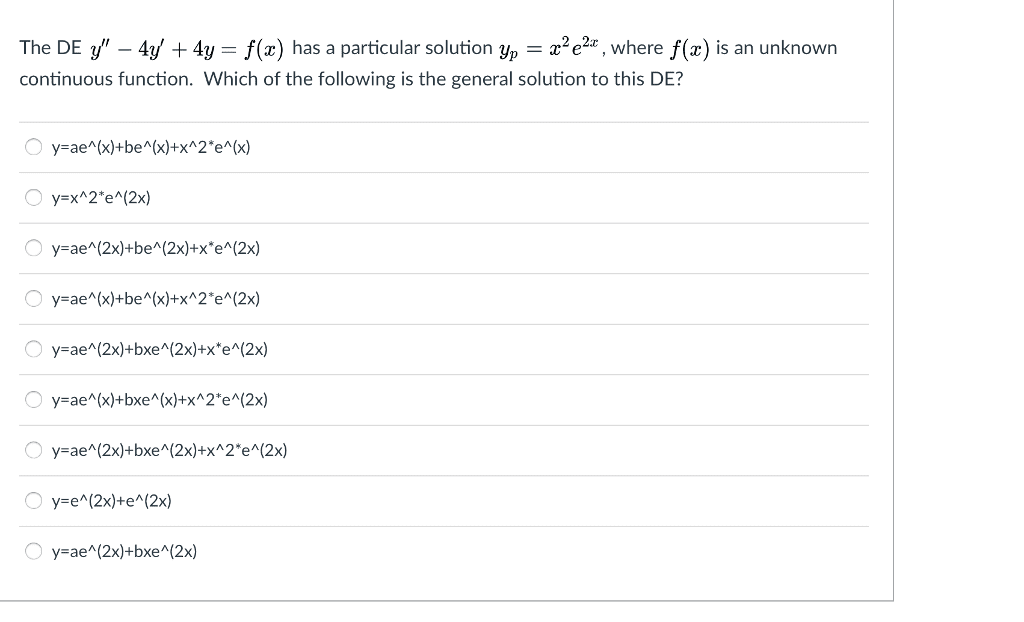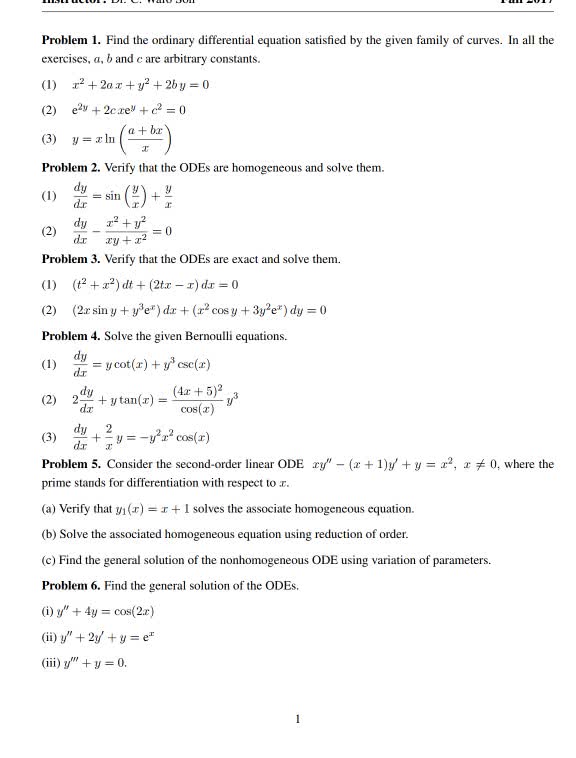MATH 1005 Lecture Notes - Lecture 1: Ordinary Differential Equation

Chapter 1: introduction
1.1 basic concept
A differential equation (DE) contains an unknown function (y = f(x)), derivatives of it and
Functions of the independent variable (x).
Example: y’ = cos x + 2, y’’+ 2x = ex , xy’’ + y’ = x2
When the unknown function us a function of a single variable only, like y = f(x), the derivatives are
“ordinary”, ie y’ = 𝑑𝑦
𝑑𝑥 , and we have ordinary differential equation (ODE)
If the unknown function depends on more than one variable, ie.u = f(x,y), we have partial derivatives
(PDE). 𝜕𝑦
𝜕𝑥, 𝜕𝑢
𝜕𝑦
Order of a DE is the order of the highest-ordered derivative that appears in it
The solution of a DE is the unknown function y that satisfy it.
Eg. y’ = 2 + cos x y = 2x + sin x + C (general solution)
To get a particular or unique solution, we need to add an initial condition (IC),
Eg. y’ = 2 + cos x , y(0) = 7 7 = 2(0) + sin (0) + C , C = 7
y = 2x + sin x + y (particular solution)
The general solution of an nth – order ODE typically contains n arbitrary constraints.
Eg. y’’ = 0 y’ = C y = Cx + D
The solution of an ODE is a curve in the x-y plane.
Explicit solution: y is defined explicitly as a function of x
Eg. y =2x +C
Implicit solution: y is defined implicitly as function of x
Eg. x2 + y2 = 1
Document Summary
A differential equation (de) contains an unknown function (y = f(x)), derivatives of it and. Example: y" = cos x + 2, y""+ 2x = ex , xy"" + y" = x2. When the unknown function us a function of a single variable only, like y = f(x), the derivatives are (cid:862)ordinary(cid:863), ie y" = (cid:3052)(cid:3051) , and we have ordinary differential equation (ode) (pde). (cid:3052)(cid:3051), (cid:3052) If the unknown function depends on more than one variable, ie. u = f(x,y), we have partial derivatives. Order of a de is the order of the highest-ordered derivative that appears in it. The solution of a de is the unknown function y that satisfy it. Eg. y" = 2 + cos x y = 2x + sin x + c (general solution) To get a particular or unique solution, we need to add an initial condition (ic),





